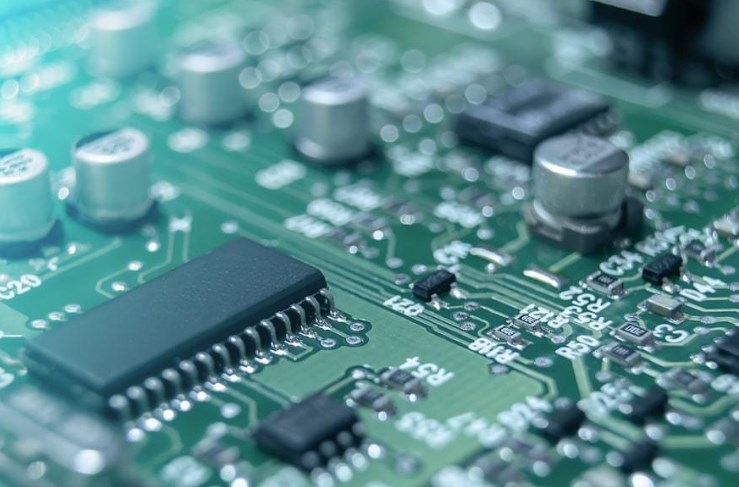As technology enthusiasts, we, at E-star Trading, have established ourselves as a leading distributor of IC chip products, catering to the ever-growing needs of the market. Leveraging our expertise and experience, we provide an in-depth analysis and forecast of the price trends in the IC chip industry, enabling our customers to make informed decisions and capitalize on the opportunities presented by this dynamic market.
Introduction
Brief overview of the IC chip market
The IC chip market refers to the global industry that deals with the production and distribution of integrated circuits (ICs). These small electronic devices are essential components in various electronic devices, such as computers, smartphones, and cars.
The IC chip market has been experiencing steady growth over the years, driven by the increasing demand for advanced technology. As a leading distributor in this industry, E-star Trading plays a crucial role in facilitating the supply of IC chips to manufacturers and businesses worldwide.
Introduction to E-star Trading
At E-star Trading, we have established ourselves as a top-tier distributor of IC chips products. Our company has been in the industry for over a decade, earning a reputation for reliability and excellent customer service.
With strong partnerships with leading IC chip manufacturers, we have developed a comprehensive network that allows us to access a diverse range of products and deliver them efficiently to our clients. Our dedication to quality and integrity has made us a trusted supplier for numerous businesses across various industries.
Factors Influencing IC chip prices
1. Supply and demand dynamics
The prices of IC chips are heavily influenced by the balance between supply and demand in the market. When demand for specific IC chips exceeds the available supply, prices tend to increase. Conversely, prices may decrease when the market faces an oversupply.
E-star Trading closely monitors these dynamics, ensuring that we maintain sufficient stock levels to meet the demands of our clients while also taking advantage of favorable pricing opportunities.
2. Technological advancements
Constant advancements in technology have a significant impact on IC chip prices. As new and more advanced chips are developed, older versions become obsolete, leading to a decrease in their prices.
On the other hand, highly sought-after chips with cutting-edge technology tend to command higher prices. E-star Trading stays up-to-date with the latest technological developments in the industry and collaborates with manufacturers to provide our customers with access to state-of-the-art IC chips.
3. Macroeconomic factors
Macroeconomic factors, such as inflation, exchange rates, and global economic conditions, can influence IC chip prices. For example, fluctuations in currency exchange rates may affect the prices of imported IC chips.
Economic downturns may also lead to a decrease in demand for certain electronic devices, subsequently impacting the prices of their components. E-star Trading carefully analyzes these macroeconomic factors to anticipate potential price fluctuations and mitigate any adverse effects on our clients.
Historical IC chip price trends
Past price fluctuations
By conducting a thorough analysis of historical price trends, E-star Trading can identify patterns and factors that have influenced IC chip prices in the past. This analysis allows us to make informed decisions regarding inventory management, purchasing strategies, and pricing for our clients.
Our experienced team utilizes advanced data analysis techniques and industry expertise to gain insights into how various factors have impacted IC chip prices over time.
Key factors driving price variations
Several key factors have been observed to drive price variations in the IC chip market. These include technological obsolescence, changes in manufacturing costs, fluctuations in supply and demand, and market competition. E-star Trading closely monitors these factors to adapt our business strategies accordingly and offer the most competitive prices to our clients.
Recent IC chip price trends
Current market conditions
In recent times, the IC chip market has experienced increased demand due to the growing reliance on technologies like artificial intelligence, 5G communication, and Internet of Things (IoT). This surge in demand has led to a rise in IC chip prices, particularly for chips used in high-performance devices.
Major trends observed in IC chip prices
Some major trends have been observed in recent IC chip price dynamics. The increasing demand for electric vehicles, advancements in data centers, and the emergence of new applications in sectors like healthcare and renewable energy have significantly influenced IC chip prices.
Additionally, supply chain disruptions caused by factors like the global pandemic and geopolitical tensions have contributed to price fluctuations. E-star Trading stays vigilant in tracking these trends to provide our customers with timely market insights and reliable pricing information.
Methodology employed for price forecasting
Data analysis and modeling techniques
At E-star Trading, we utilize a comprehensive approach to forecast IC chip price trends. Our methodology involves a combination of data analysis and modeling techniques. We collect and analyze vast amounts of historical data related to IC chip prices, market trends, and other relevant factors.
To ensure accuracy, we employ various statistical algorithms for prediction. These algorithms take into account factors such as market demand, production capacity, and market competition. By assessing these variables, we are able to generate reliable forecasts for future IC chip price trends.
Statistical algorithms used for prediction
Considering the ever-evolving technological landscape and market dynamics, we project future market scenarios and their implications on IC chip prices. Our projections are based on thorough analysis of supply and demand trends. We closely monitor changes in the market landscape, technological advancements, and emerging competitive forces.
By keeping a vigilant eye on these factors, we are able to foresee potential shifts in the market that may impact IC chip prices. This allows us to adapt our strategies accordingly and provide our customers with accurate pricing forecasts.
Future market scenarios and implications
Projections based on supply and demand trends
Considering the ever-evolving technological landscape and market dynamics, we project future market scenarios and their implications on IC chip prices. Our projections are based on thorough analysis of supply and demand trends. We closely monitor changes in the market landscape, technological advancements, and emerging competitive forces.
Considering technological advancements and market competition
By keeping a vigilant eye on these factors, we are able to foresee potential shifts in the market that may impact IC chip prices. This allows us to adapt our strategies accordingly and provide our customers with accurate pricing forecasts.
Potential risks and uncertainties
1. Trade policies and government regulations
While forecasting IC chip prices, it is crucial to take into account potential risks and uncertainties. At E-star Trading, we carefully analyze various factors that may affect IC chip prices. These include trade policies and government regulations, which can have a significant impact on the import and export of IC chips.
2. Fluctuations in raw material costs
Additionally, fluctuations in raw material costs also play a vital role in determining IC chip prices. Changes in the prices of key raw materials, such as silicon, can greatly influence the overall cost of manufacturing IC chips.
3. Emergence of new market players
Another important factor is the emergence of new market players. As new companies enter the market and competition increases, it can lead to price fluctuations and uncertainties. Anticipating and mitigating these risks allow E-star Trading to effectively navigate the market and provide our customers with stable pricing options.
IV. E-star Trading’s Perspective
Company’s role as a distributor of IC chip products
As a leading distributor of IC chip products, E-star Trading plays a crucial role in the supply chain. We act as a bridge between manufacturers and end-users, ensuring a seamless distribution process.
Our dedication to quality and reliability has allowed us to build strong relationships with manufacturers. By partnering with trusted manufacturers, we can offer our customers a wide range of high-quality IC chip products.
Strategies adopted by E-star Trading
- Building strong relationships with manufacturers. To optimize sales and pricing, E-star Trading has implemented several strategic initiatives. First and foremost, we prioritize building strong relationships with manufacturers. This allows us to gain access to the latest IC chip products and negotiate favorable pricing terms.
- Offering competitive pricing and discounts. Additionally, we strive to offer competitive pricing and discounts to our customers. By monitoring the market trends and benchmarking against competitors, we ensure that our pricing remains attractive and market-aligned.
- Ensuring efficient supply chain management. Efficient supply chain management is another key strategy we employ. By streamlining our supply chain processes, we minimize lead times and ensure the timely delivery of IC chip products to our customers. This helps us maintain a competitive edge and foster customer satisfaction.

Conclusion
With our unwavering commitment to excellence and customer satisfaction, E-star Trading aims to be your trusted partner in navigating the constantly changing landscape of the IC chip industry. As we delve into the future, our analysis and forecast provide a valuable tool for businesses and individuals seeking to optimize their investment in IC chip products.




